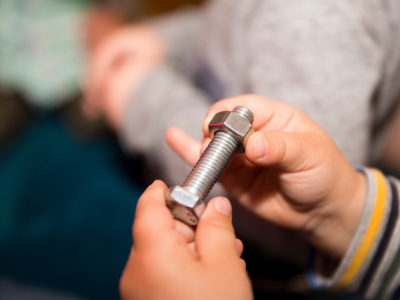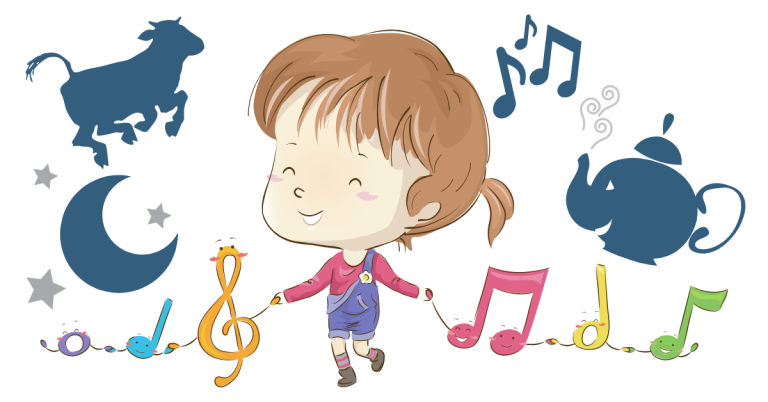Develop Your Child or Student’s Pincer Grasp: Strengthening Activities
The pincer grasp is named after the way crabs and scorpions pick up things in their claws. This grasp is an important motor milestone for infants and is used for countless tasks that help children gain greater independence and life-skills. Here are some activities you can do to help strengthen your child or student’s pincer grasp.
Maybe you’ve heard about the all-important pincer grasp and want to know more, or perhaps, like many others, this term is unfamiliar to you. Either way, today, we cover what this grasp is, how it develops, and why it is valuable for children to master.
What is the Pincer Grasp?
The pincer grasp is simply the ability to hold something between the thumb and index finger (also known as the pointer/forefinger). This skill is an important fine-motor milestone for children and typically starts to develop in babies around 9 to 10 months old.

Babies will go from picking up things using their whole palm to using a pincer grasp. However, this grasp goes through a few variations before it resembles what is referred to as the superior pincer grasp.
It’s a whole new world of discovery for babies when they learn how to gain better hand muscle control and coordination. When paired with crawling, suddenly everything is available for them to explore, from small pieces of food to any tiny object they can find. And whatever the object might be, it will quickly go into their mouths any chance they get! This is when parents start to feel the need for a third eye in the back of their heads and some ‘Go-Go-Gadget’ abilities.
Why is it Called the Pincer Grasp?
The pincer grasp gets its name from its resemblance to the way crabs and scorpions pick up objects in their claws. Other names for this grasp are the neat pincer grasp and superior grasp. Children in the early stages or who struggle with developing this grasp sometimes get described as having an immature or crude pincer grasp.
Why is the Pincer Grasp Important?
We use the pincer grasp for a host of everyday tasks, here are some big ones:
- Eating: feeding oneself, both by using fingers and using utensils/cutlery
- Dressing: buttoning buttons, zipping up zippers, doing up shoes with velcro or laces; adjusting straps and belts
- Using a wide variety of everyday tools and instruments
- Manipulating and playing with smaller objects and toys
The pincer grasp also helps children learn to use writing and drawing tools correctly to give them the best control to help with drawing, colouring, and writing tasks. As children continue to practice, strengthen, and refine their pincer grasp, they are really working towards greater independence and accuracy with everyday tasks.
Fine motor skills, such as the pincer grasp, continue to factor in as children grow older, influencing writing proficiency which affects later academic success and individuals’ choice of occupations. It’s incredibly valuable to ensure your child has many safe opportunities to explore, play, and strengthen their pincer grasp in a variety of ways. These tactile experiences aid your child’s development and learning in crucial ways in these early years. Did you know that 80% of the brain is developed by around age 3? The great news? It doesn’t have to be complicated.
Does my Child Have a Weak Pincer Grasp?
All children vary in their rate and quality of development of fine motor skills, however, children with a weak or immature pincer grasp may have more difficulty playing with small toys or objects, using everyday tools like cutlery/utensils, scissors, crayons, paintbrushes, and pencils, and being independent with dressing tasks involving zippers, laces, straps, snaps, and buttons.
There are lots of available resources online and occupational therapists have tons of great tips, tools, and ideas if your child struggles with fine motor skills. Children with disabilities or brain injuries affecting their fine motor development greatly benefit from early intervention strategies and therapies. For many others, a child’s issues with their pincer grasp may not get noticed until entering kindergarten, when a teacher with a keen eye draws parents’ attention to it.
While bringing the thumb and index finger together may seem simple enough, it’s actually a complex brain process requiring precise strength and control of small muscles in the hand, along with good eye-hand coordination.
How Does the Pincer Grasp Develop?
The pincer grasp is a natural part of children’s hand grasp development and there are many prior developmental skills that lead up to a baby developing their pincer grasp.
Some of these skills include core strength and stability. Babies start building their core muscles through back and tummy time on the floor. As they build their core, this helps them to feel stable enough to reach out and start using their fingers to try grabbing objects.
When babies are developing their pincer grasp, it takes lots of energy and intense focus to make the coordinated and precise movements this grasp requires. If they don’t have the proper core strength or are using most of their energy trying to sit up, they may temporarily revert back to a whole-palm grasp (palmer grasp).
Stages of Pincer Grasp Development
Your baby’s grasp will go through various stages before it resembles the superior pincer grasp.
These Stages Include:
Around 4-6 Months
Ulnar Palmer Grasp: This grasp is seen when an object is held toward the pinkie side of their hand, babies will use their whole hand to try to grab hold of the object.
Palmer Grasp: Fingers move toward the palm, allowing babies to wrap their fingers around an object. Their thumb is not used for this grasp (no thumb opposition).
Radial Palmar Grasp: Babies now start using their thumb, their fingers will curl around the object and their thumb will stabilize it on the side.
Around 7-8 Months
Raking Grasp: At around the 6-month mark, babies start using all of their fingers like a rake, curling the tip of their fingers over an object to bring it towards them.
Radial Digital Grasp: Objects start being held between all their fingers and thumb, providing a gap between the object and their palm. They no longer need their palm to help stabilize the object to keep hold of it.
Inferior Pincer Grasp: Babies can now hold objects between the thumb and index finger (forefinger) but this ability is not yet refined. An object is held more towards the thumb side of the hand and more in the center pads of the thumb and index finger, as opposed to the tip of the finger pads.
Around 9-12 Months
Pincer Grasp (Superior Pincer Grasp): Babies work on refining their pincer grasp till they are able to hold the object between the tip of their thumb and tip of their index finger (forefinger) creating arches with their fingers forming an open circle from the side.
Children continue to strengthen their pincer grasp as they grow. Between 3-5 years of age, children start learning to maneuver latches, zippers, snaps, straps, crayons, markers, and pencils. As they get older, they develop a stronger grip and can manage heavier items using the pincer grasp.
If you are ever concerned about your baby’s pincer grasp development or fine motor skills, consult your pediatrician. They often will refer your child to an occupational therapist who can provide targeted support and exercises to help develop their pincer grasp and fine motor development in general.
Ways to Help Young Children Develop Their Pincer Grasp
Providing a good variety of activities that expose your child to different textures, shapes, and ways to manipulate objects is great for helping your child work on their pincer grasp.
The more exposure and variety your child has with different types of age-appropriate tools and toys, the more their brain gives attention to the sensory receptors within their hands and fingers, strengthening this brain-hand connection.
New or novel tactile experiences are especially great at bringing attention and awareness to children’s hands and fingers. These include exposing children to different types of contrasts such as hot and cold, rough and smooth, wet and dry, soft and hard, and gooey/mushy and firm. Variety helps encourage different types of movements to help build thumb opposition, thumb and finger flexion and extension, finger isolation movements, and overall hand and finger manipulation.
These Tools and Activities are Great for Pincer Grasp Development
Our Top 15 Pincer Grasp Strengthening Activities
Finger foods (introducing a variety of shapes and textures when your baby is ready for them)
Berry picking
Animal rescues – using tape, string or elastics
Picking flowers & making bouquets or flower arrangements
Songs, rhymes, and games using hand and body actions
Sensory bins with transfer tools
Lightbox & shadow activities
Colour experimentation using eye droppers & syringes
Building a birdhouse or bird feeder
Busy books, boards, or binders
Nature scavenger hunt and/or rock collecting
Playdough and kinetic sand activities & using reusable playdough mats
Lacing activities -like noodle or pipe cleaner lacing, making beaded necklaces, and using lacing toys and cards
Playing with puzzles and games
Marbles runs & pom-pom tube drops
Key Takeaways:
- As infants build their core strength, it allows them to work on developing their pincer grasp
- The pincer grasp is important for many independent life skills, such as zipping zippers and buttoning buttons
- Being able to properly hold a pencil, marker, or paintbrush to draw, colour, and write requires a well-developed pincer grasp
- Any opportunity for babies and toddlers to use their hands and fingers will help them build sensitivity, strength, coordination, and dexterity, important for mastering the pincer grasp
- Providing variation in the types of activities children do and exposing them to different textures is important for fine motor development
- Activities involving pinching, pulling, pressing, and squeezing are especially useful for developing and strengthening childrens’ pincer grasp
- Occupational therapists can provide targeted support for your child to address concerns with fine motor skill development, including pincer grasp development
Nurturing Little Minds, Sparking Big Dreams

I’m happy you’re here!
Hi, I’m Julie, the passionate creator of Ox & Owl Literacy. I enjoy empowering families and educators with wonderful resources to inspire fun, imaginative, and joyful learning opportunities for young kiddos. You’ll find lots of recommended books, reading resources, and creative learning activities on this site aiming to help children fall in love with language, books, reading, and the transformational power of stories.









































